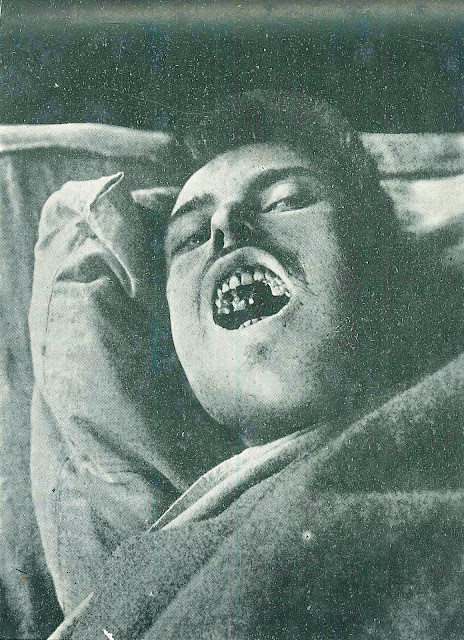Alexandreff, a Russian patient who surrendered during the siege of Port Arthur, underwent pathological examination of his corpse after his death from scorbut (scurvy). A tumor-like growth protruded from the gingiva on the inner surface of the right and left maxillary molars. The surface was uneven. The neck was swollen. The patient had generalized edema, jaundice, hemolysis, spontaneous bleeding, convulsions, and fever. The anterior gingiva was swollen, gangrenous, and contaminated. Tumor of the right maxillary molar was observed between the dentition. Scorbut was discovered in 1932 when vitamin C was extracted and found to prevent scurvy in guinea pigs.
On January 2, 1904, the Russians in Brusun Fortress lost their will to fight, begged for surrender, and opened the castle. The total number of wounded and sick in the castle reached about 17,000. However, the majority of them were "scorbut" patients. Scorbut is a rare disease in Japan. Even in other countries, the number of cases had been gradually decreasing in recent years. At that time, there was no definitive theory on the cause of the disease. At the same time as the fortress war broke out, nearly 10,000 patients were exposed. The medics were ordered to treat these patients, study the cause and pathology of scorbutic acid, and make progress in its treatment. Prevention methods were developed for future reference. A research team was dispatched to conduct bacteriological investigation and to carry out clinical and pathological anatomical research.
Scurvy is caused by a deficiency of vitamin C, which makes it difficult for the body to absorb iron and produce collagen. When the body does not produce enough collagen, the tissues begin to break down. Vitamin C deficiency begins to appear after about 8 to 12 weeks. Early signs include anorexia, weight loss, malaise, irritability, and lethargy; within one to three months, anemia, myalgia, bone pain, swelling, edema, petechiae, subcutaneous bleeding, corkscrew hairs, periodontal disease and tooth loss, poor wound healing, difficulty breathing, mood changes, and depression. It can be fatal with signs of generalized edema, severe jaundice, destruction of red blood cells known as hemolysis, sudden spontaneous bleeding, neuropathy, fever, and convulsions.

